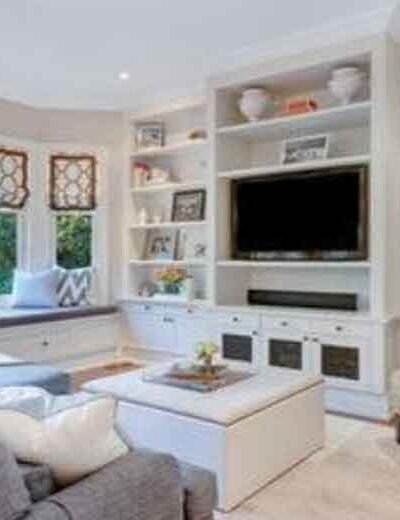In today’s fast-paced world, compact living has become a necessity for many. Whether you reside in a cozy studio apartment or a small house, making the most out of limited space can greatly enhance your quality of life. The secret lies in utilizing smart organization techniques and incorporating multifunctional furniture to make your home not only livable but also stylish.
Compact living solutions can offer relief from clutter and create a serene environment. Imagine walking into a space where everything has its place, and you can enjoy peace and comfort without the chaos of unnecessary items. The strategies outlined here will elevate your compact living experience, making it efficient and stylish.
Understanding the Principles of Compact Living
To fully embrace compact living, it’s crucial to understand the core principles that guide it. Here are a few:
- Functionality
- Flexibility
- Organization
By prioritizing these principles, your living space can transform from cramped to convenient. For instance, consider the use of multifunctional furniture, such as a sofa bed or an ottoman with storage. These pieces not only save space, but they also enhance the overall aesthetics of your home.
Smart Storage Solutions
Storage is often a top concern when it comes to compact living. When you don’t have the luxury of extra square footage, creative storage solutions become essential. Try these innovative ideas:
Under-Bed Storage
Utilize the space under your bed with storage bins or drawers. This area can hold seasonal clothing, extra linens, or even children’s toys, helping to declutter bedroom spaces. It’s a simple way to maximize every inch of your home.
Vertical Space
When floor space is limited, look upwards! Install shelves high on the walls for books, decor, or kitchen items. This technique not only keeps items out of the way but also draws the eye upward, creating an illusion of a larger area.
Choosing Multifunctional Furniture
The right furniture can make or break a compact living experience. Multifunctional furniture is designed to serve more than one purpose, thus saving space and adding practicality. Here are a few types to consider:
Sofa Beds
Sofa beds offer a comfortable seating option by day and a cozy sleeping arrangement by night. This flexibility makes them perfect for small spaces, especially if you frequently host guests.
Nested Tables
Nested tables can expand when necessary, providing additional surface area for activities like dining or working, and they can tuck away when not in use, ensuring an uncluttered environment.
Foldable Ho#use
A foldable house represents an innovative approach to compact living. These structures can be collapsed or expanded based on necessity, making them an ideal solution for those seeking to maximize their living space.
Declutter Regularly
One of the most powerful strategies for compact living is the practice of decluttering. Regularly assessing your belongings will help you maintain a tidy space. Consider the following strategies:
- Schedule Decluttering Sessions
- Adopt the One-In, One-Out Rule
- Use the Four-Box Method
Decluttering not only frees up valuable space but also can help reduce stress and anxiety associated with living in a crowded environment. Studies show that a clutter-free space can enhance productivity and overall well-being.
Design Strategies for Compact Living
Design plays a vital role in making a compact living area feel more spacious. Simple design tweaks can create an inviting atmosphere. Here are some design strategies you can implement:
Color Choices
Light and neutral colors tend to make a room feel larger. Opt for white, pastel shades, or light grays to enhance the space-effect. Dark colors can make a room feel cozy but may also confine it visually.
Mirrors
Incorporating mirrors into your design can dramatically open up a space. A strategically placed mirror can reflect light and make any area feel more expansive. Consider using a large mirror as a focal point or grouping several smaller mirrors together for added depth.
Living Area Optimization
In compact homes, every area, including the living room, must be efficiently utilized. Here are some additional tips for optimizing this crucial space:
Creating a Functional Bedroom Space
Zone Your Space
Establishing designated zones can help you protect coziness in your compact living room while defining areas for specific activities, such as reading, watching TV, or working. Use rugs or furniture placement to delineate these spaces without enclosing them.
Wall-Mounted TVs
Consider wall-mounting your television to free up valuable floor space. This sleek option can also create a modern feel while allowing room for additional furniture or décor.
Kitchen Solutions for Compact Living
Kitchens are often the heart of the home, but they can also be the most challenging space to manage in compact living. Here are practical tactics to enhance your kitchen:
Efficient Layout
Design your kitchen for efficiency by adhering to the work triangle principle, which enhances workflow between the stove, sink, and refrigerator. This layout maximizes space and improves functionality.
Organize Pantries and Cabinets
Use bins, baskets, and shelf risers to organize pantry items and maximize vertical space. A well-organized pantry ensures that everything is easily accessible.
Outdoor Space and Compact Living
Even if you live in a compact home, outdoor space can still be maximized. Here are a few ideas:
Vertical Gardens
Utilize vertical spaces even outdoors. Vertical gardens not only save ground space but also add greenery and beauty to your living area.
Portable Furniture
Furniture designed for outdoor use should be portable and lightweight, allowing you to rearrange the space easily. Consider foldable chairs and tables that can be stored away when not in use.
Understanding Compact Living
Mastering the art of compact living requires creativity and commitment. With the right strategies and a bit of effort, you can transform any limited space into a functional and pleasing home. Remember to focus on organization, invest in multifunctional pieces, and declutter regularly to maintain the calm environment you desire.
Compact living doesn’t have to mean sacrificing style or comfort; it’s about making mindful choices to create a space that truly reflects your personal style. Start implementing these tips today and experience the benefits of compact living in your home!
For more helpful tips, check out the rest of our site today.





Leave a Reply